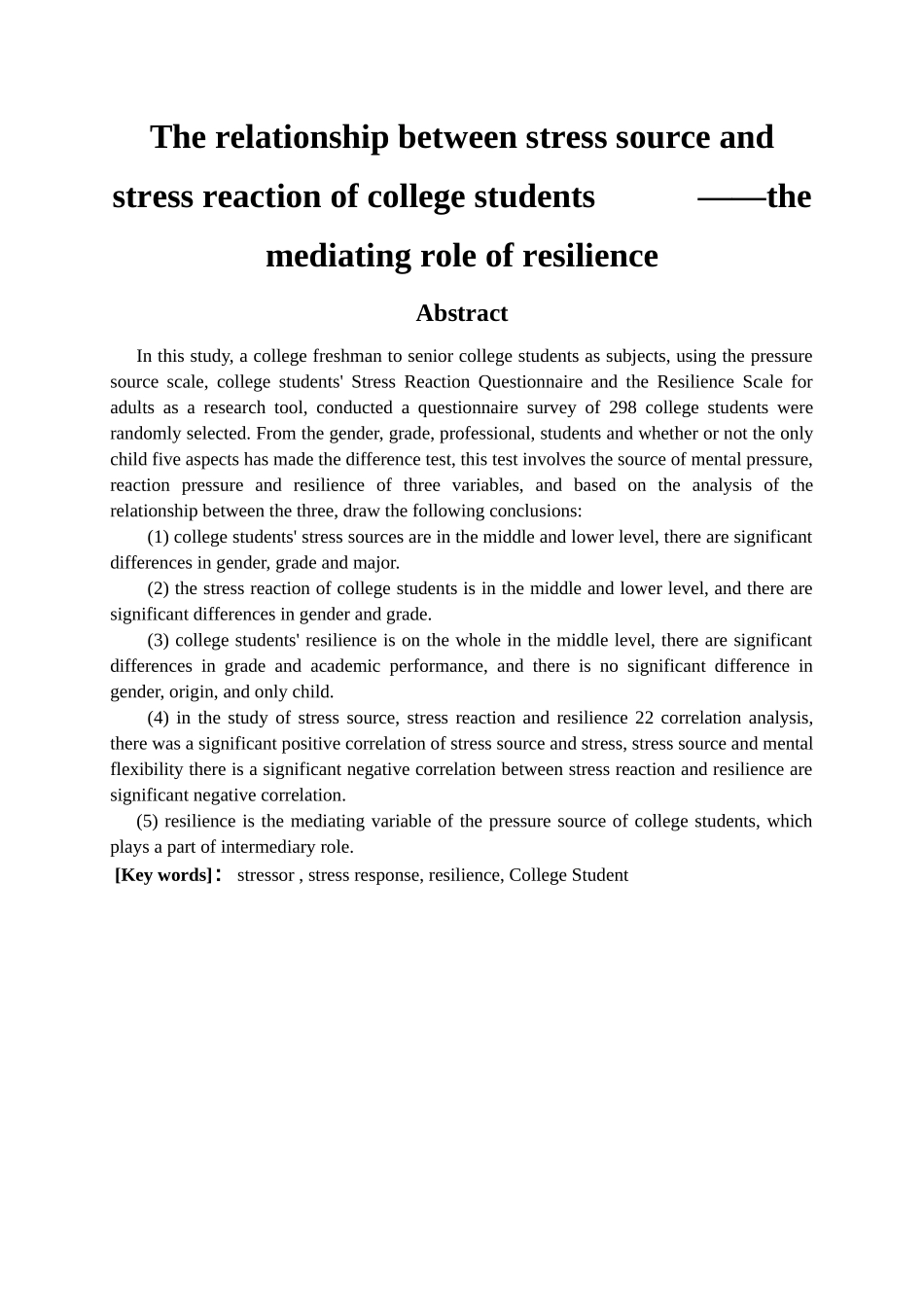大学生压力源与压力反应的关系 ——心理弹性的中介作用摘 要本研究以某院校大一至大四学生为被试,采用大学生大学压力源量表、大学生压力反应问卷和成人心理弹性量表为研究工具,随机抽取了 298 名不同专业的大学生进行问卷调查。从性别、年级、专业、生源地和是否独生子女这五个方面进行差异性检验,此检验涉及大学生压力源、压力反应和心理弹性三个变量,并在此基础上分析了三者之间的相互关系,得出如下结论:(1)大学生压力源整体上处于中下水平,在性别、年级、专业存在显著差异,生源地、是否独生子女无显著差异。(2)大学生压力反应在整体上处于中下水平,在性别、年级上存在显著差异,在专业、生源地、是否独生子女上差异不显著。(3)大学生心理弹性在整体上处于中上水平,在年级、学习成绩上存在显著差异,在性别、生源地、是否独生子女上差异不显著。(4)在大学生压力源、压力反应与心理弹性两两相关分析的研究上,压力源与压力反应存在显著正相关,压力源与心理弹性存在显著负相关,压力反应与心理弹性之间也存在显著负相关。(5)心理弹性是大学生压力源作用于压力反应的中介变量,起到了部分的中介作用。【关键词】 压力源 压力反应 心理弹性 大学生The relationship between stress source and stress reaction of college students ——the mediating role of resilienceAbstract In this study, a college freshman to senior college students as subjects, using the pressure source scale, college students' Stress Reaction Questionnaire and the Resilience Scale for adults as a research tool, conducted a questionnaire survey of 298 college students were randomly selected. From the gender, grade, professional, students and whether or not the only child five aspects has made the difference test, this test involves the source of mental pressure, reaction pressure and resilience of three variables, and based on the analysis of the relationship between the three, draw the following conclusions:(1) college students' stress sources are in the middle and lower level, there are significant differences in gender, grade and maj...


